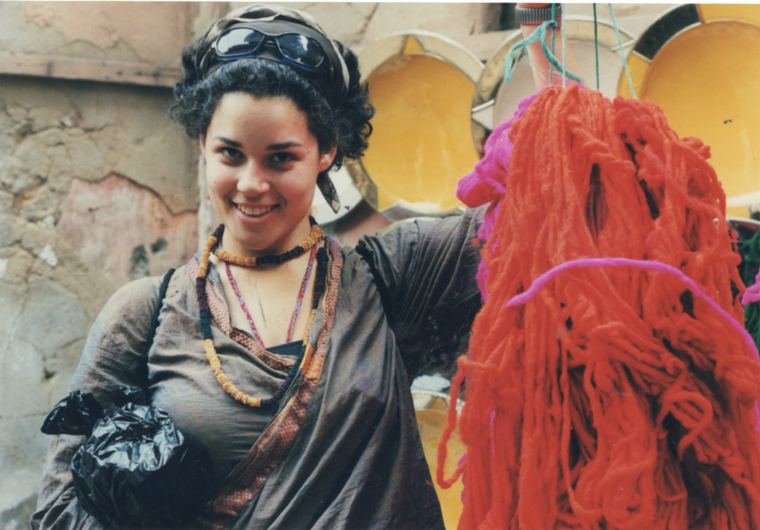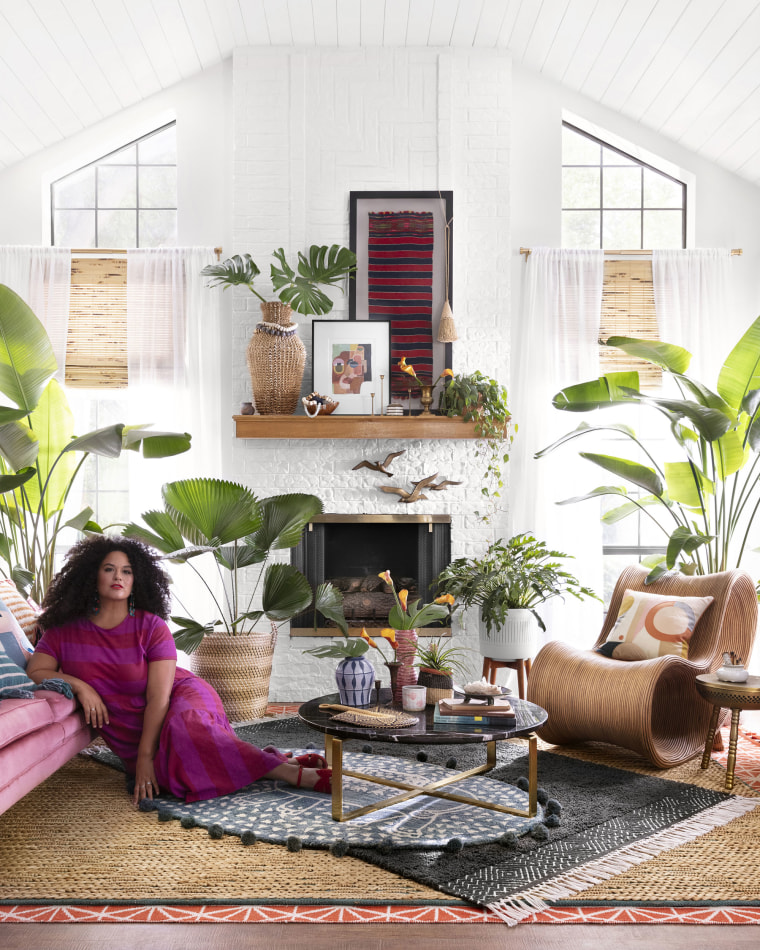We are all works in progress; even the successful women you see owning it on Instagram faced stumbling blocks along the way and continue to work hard to stay at the top of their game. In this series, we're sitting down with the people that inspire us to find out: How'd they do it? And what is success really like? This is "Getting There."
Justina Blakeney is an artist and designer known for her bright and bold interiors style, which usually includes a houseplant or two (or three ... or 10). She's also the author of the "The New Bohemians" and the creator of Jungalow, which started as a blog in 2009 and has since morphed into an online shop for colorful home goods and decor. Through Jungalow, she has collaborated with Anthropologie, Target and more.
But before launching her own brand, Blakeney worked dozens of jobs trying to find her niche — as a consultant, a magazine editor, in retail, as a boutique owner, in graphic and interior design and more.
Here's what she's learned along the way.
For more like this, follow TMRW on Instagram at @tmrwxtoday.
TMRW: What was your very first job?
Justina Blakeney: I was 15 and my parents ran a school for mentally disabled teenage girls. I went to the classroom after school and taught arts and crafts. But my first job that wasn't a familial job? I worked retail at Express, the clothing store.
Talk to me about some of the moments in your career that led you to where you are today.
I've always been unafraid to embrace technology and teach myself different programs and learn things like Photoshop or Illustrator or social media platforms. I know if there's something I can't figure out, I can find a Reddit thread or a YouTube tutorial that can teach me. So being autodidactic in that sense has been extremely helpful to me.

I went through a long period, three or four years, of just saying yes to any sort of creative oddball project. I just had the courage and the faith to say, "I'm going to figure this out, but I'm also going to be transparent with the client and say, 'I've never done this before, but I can do it.'" And it worked. Learning how to bootstrap and be scrappy and see how much you can really do yourself is hugely important.
For a long time I was like, "Maybe I want to be a designer." But there are so many different types of design — interior design, industrial design, fashion design — and until you're actually doing it, it's sort of hard to know. So I considered that a testing period. And through that, I was able to hone in on exactly what it is I like doing.
How did you know when it was time to branch out on your own?
All of a sudden it was getting really difficult to balance client work with my own business. I realized I was doing too much and I had to choose. It was rocky that first year. I was getting a lot of press and there was interest and the book was a New York Times bestseller, but that didn't really translate into dollars. There was a moment after the book came out that I found myself styling for a magazine a couple days a week and taking on other jobs just so I could make rent.
So was there ever a moment of doubt that starting your business was the right thing to do?
No. When I realized that wasn't where I wanted to put my focus, I didn't pour energy into client work anymore. I poured energy into my own business. I found the more I nourished and watered the seeds of what I was growing, the more it grew. And when I took away from that, it suffered. So I saw it very plainly. I tried not to be motivated by fear. I tried to make bold decisions and work really hard to set goals and hit them.
I poured energy into my own business. I found the more I nourished and watered the seeds of what I was growing, the more it grew. And when I took away from that, it suffered.
I think really long term. Like, I think longer term than most folks do. Even when I was first starting my blog, I knew what it could be if everything went huge. I think on this very grand scale and I usually keep that stuff to myself because sometimes people think I'm nuts. Like when I started my book, if I said out loud, "This book is going to be a New York Times bestseller," people would have looked at me like I was crazy. I set these ridiculous goals for myself, and then I chip away at those long-term goals. Not expecting everything to happen tomorrow gives you room to work toward something big.
Interior design has been criticized for its lack of diversity for years. What's been your experience in the industry as a Black woman?
Isolation is the first word that comes to mind, but I don't think that's quite right. I think it's like if you're in a school and you're the only Black kid in the classroom. And I think that's been the feeling for a very long time. And because I'm biracial, there's an added, different element to it than other folks who might have darker skin than I do (have experienced). It's an extremely homogeneous industry. I have experienced racism on many different occasions. Not even covert racism, but straight-up, overt racism — prejudices or racist comments — and it's happened for years. Ultimately, I think the whole industry needs to take a good look at itself and make some serious changes.

You're known for creating loud, colorful spaces. Was there ever a time you were into minimalism?
I definitely have my moment of liking quiet spaces, but to me, that doesn't mean minimalism. It maybe just means more of a quieter color palette or that the contrast lies more in diversity of textures as opposed to diversity of colors. I've always been a collector. I've always loved the stories vintage things tell. I can get lost staring at paintings or tchotchkes.
We're all spending a lot of time at home right now and many people are reassessing what that looks like. What are some easy ways to feel happier in your own space?
Figure out how to connect the indoors with the outdoors. That can mean different things. Bring home some house plants and sprinkle some green around. They're beautiful to look at and fun to watch grow. Make sure you have ample sunlight and ample fresh air flowing through the home. Even spending just a few minutes in the morning with all the windows open, getting rid of some of that stale air, circulating in that fresh air, is going to do wonders for the energy in your home. Clean your windows. It's amazing, especially in cities, how dirty our windows can get. That's going to make you feel more connected to nature and healthier in your home.



